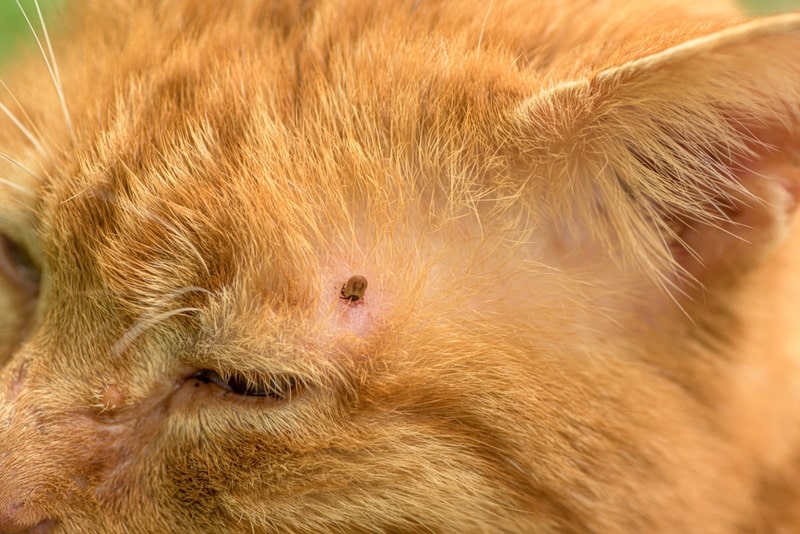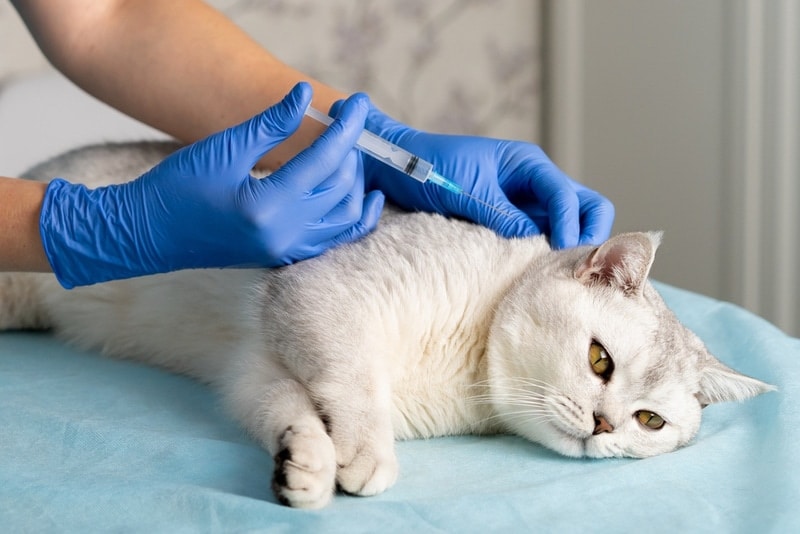Lyme disease is a bacterial infection caused by the bacteria Borrelia burgdorferi. Animals and humans become infected via the bite of a tick. It is a common misconception that Lyme disease is caused by ticks, as ticks merely spread the disease. Lyme disease is mainly spread by Ixodes ticks. These commonly feed off deer and other wildlife such as rabbits and foxes.
Lyme disease is very common in North America and affects all kinds of mammals, including humans. It is not very common in cats, but they can get infected too.
What Is Lyme Disease in Cats?
Lyme disease in cats is caused by Borrelia burgdorferi which is a bacterium and is transmitted by tick bites. Lyme disease is a debilitating disease that has effects on many different organs and systems in the body, including the joints, the nervous system, the heart, and the kidneys. There are at least four known types of tick that are believed to spread the disease. The most common of these ticks is the deer tick, also known as the black-legged tick.
Cats become infected when an infected tick bites the cat. When the tick becomes attached to the cat, it takes between 1 and 2 days for the bacteria to be transmitted. They pass the bacteria on through their saliva. This is why it is always advised to quickly remove ticks seen attached. The risk of infection is highest when the ticks are seeking hosts—this is springtime for nymphs and spring and fall for adults. Once a cat has been bitten by an infected tick, it can take months for clinical signs to develop, and some cats may never show any clinical signs.

What Are the Signs of Lyme Disease in Cats?
It is actually very rare for cats to display clinical signs when they are infected with Lyme disease. Common signs are generalized and non-specific and may include:
- Lameness
- Lethargy
- Increased sleeping time
- Loss of appetite
- Less interactive than usual
- Fever
- Stiffness of joints
- Swelling of joints
If the disease has spread to organs in the body and has started to affect them, further clinical signs may be seen such as:
- Vomiting
- Diarrhea
- Weight loss
- Edema of the limbs
- Tremors
- Swollen abdomen
Unlike humans and dogs, cats tend not to react when they are bitten at the bite sight. Dogs and humans often get a characteristic “bull’s eye” rash, but this is not commonly reported in cats.
What Are the Causes of Lyme Disease in Cats?
The cause of Lyme disease in cats is being bitten by a tick infected with Borrelia Burgdorferi.
The tick must have latched onto the cat for 24–48 hours for the bacteria to be transmitted. The bacteria invade the body and replicate rapidly, migrating through the tissues and affecting multiple organs.
Due to the fact they groom themselves regularly, cats often remove ticks while they are licking themselves. This usually occurs before the bacteria has had a chance to be transmitted to the cat from the tick. This may explain why Lyme disease is a lot less common in cats compared to other animals such as dogs.
How Is Lyme Disease Diagnosed in Cats?
Diagnosis of Lyme disease is usually based on clinical signs and history. Your vet is likely to rule out other causes of any clinical signs present first, as Lyme disease is not very common in cats. Your vet will speak to you first to get a full history, including any relevant travel history and whether your cat goes outdoors or not. They will examine your cat from head to tail and they may then decide to carry out blood tests and urinalysis.
There is a specific blood test for Lyme disease that can be carried out, and other diagnostic tests can help your vet assess the severity of the disease. Frustratingly, cats may not test positive for Lyme disease for up to 8 weeks after a bite.

How Do I Care for a Cat with Lyme Disease
Cats that are diagnosed with Lyme disease should be given a course of antibiotics. The usual length of the course is 30 days, although some cats may require a long course of antibiotics—this depends on how severe the infection is. The antibiotic usually given to treat Lyme disease is doxycycline. This is very effective against the bacteria; however, it is not tolerated well by all cats. Some cats can develop esophageal strictures when given oral doxycycline as the tablet can get stuck. Your vet may offer your cat the liquid form or advise you to flush the tablet down your cat’s throat with water after giving them the tablet.
As well as antibiotics, your vet may prescribe pain relief such as non-steroidal anti-inflammatories. This can be helpful for joint pain. Depending on how severe the infection is, they may also administer supportive care, for example, intravenous fluid therapy, and nutritional support. This all depends on what organs have been affected.

Frequently Asked Questions
Can cats survive Lyme disease?
Lyme disease is very rare in cats. If your cat does become infected, and the infection is identified early, then the prognosis is good. Cats can make a full recovery with prompt administration of antibiotics if the disease is caught in the mild, early stages. If a cat gets the disease and for some reason, it goes unnoticed and untreated, then it will be more complicated to treat, and recovery will be longer.
How serious is Lyme disease in cats?
Lyme disease can be very serious in cats if it is left undiagnosed. If cats are infected, the disease can progress to cause lameness, lethargy, stiffness in limbs fatigue, breathing difficulties, and kidney problems amongst other things. On the other hand, some cats can be infected but show no clinical signs at all, so the severity of the disease does vary.
Can cats pass Lyme disease onto humans?
It is not possible for cats to pass Lyme disease directly onto humans. Your cat may, however, bring infected ticks into the home, and they can easily move from your cat to you. If they bite any humans in the house and they are infected with Borrelia burgdorferi, they will pass it on, and the humans can become infected. This is why it is so important to use tick prevention parasite treatment.

Conclusion
Lyme disease is relatively rare in cats. It is caused by bacteria and spread by ticks. If caught early, it is straightforward to treat, and the prognosis is good. If the disease has been allowed to progress, it can develop into a debilitating condition and the prognosis is poorer. Common complications include long-term kidney damage and arthritis.
It is a zoonotic disease so humans must be careful too. It is very important to keep up to date with tick prevention treatment, especially in areas where there are lots of ticks.
Featured Image Credit: anastasiya parfenyuk, Shutterstock
Credit : Source Post


